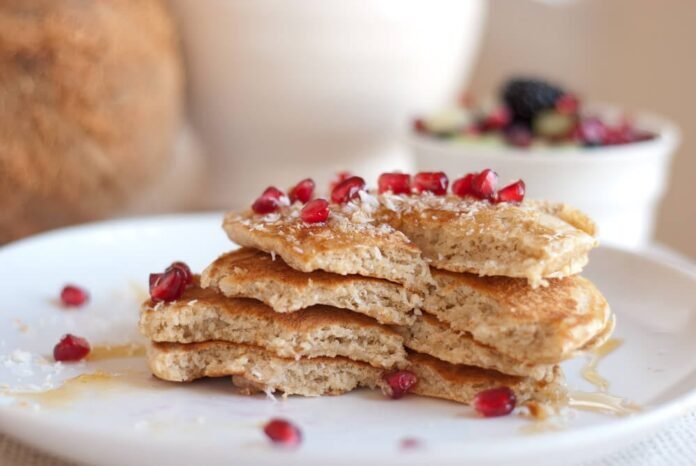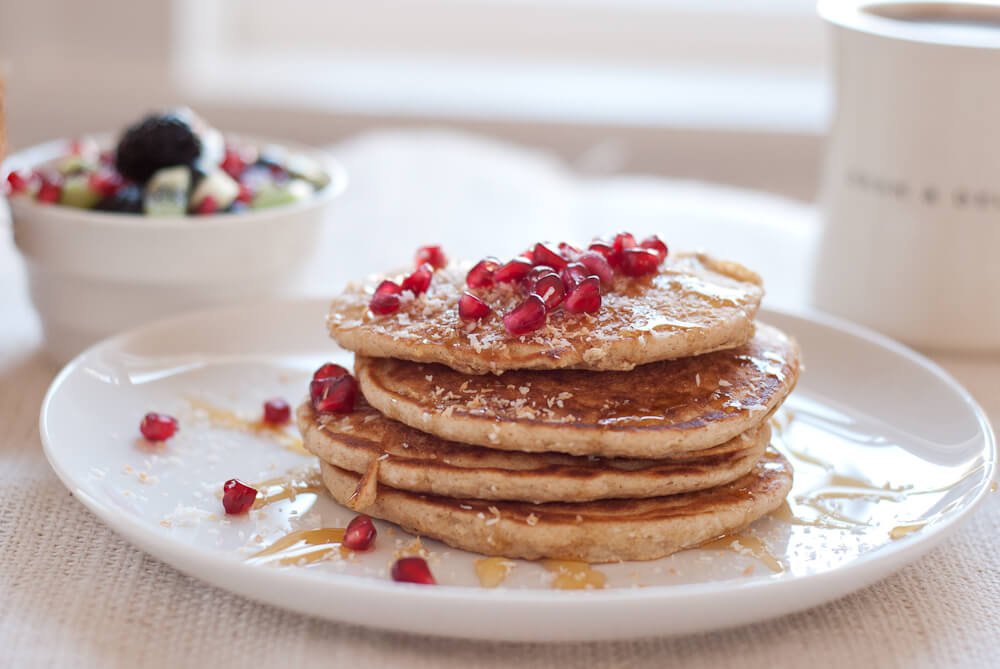
I’m so excited to share this recipe with you! I have a penchant for pancake recipes that call for seasonal ingredients (proof: pumpkin pancakes), so I couldn’t wait to try this recipe for coconut pancakes by À La Graham. While I used fresh coconut water for these pancakes, I have found that they are just as good with canned coconut milk, so you can make them all year long!
As anticipated, coconut pancakes are positively delectable: light, fluffy and moist with a delicate hint of coconut. They are perfect with fresh fruit, like pomegranate and kiwi, on a lazy winter weekend.
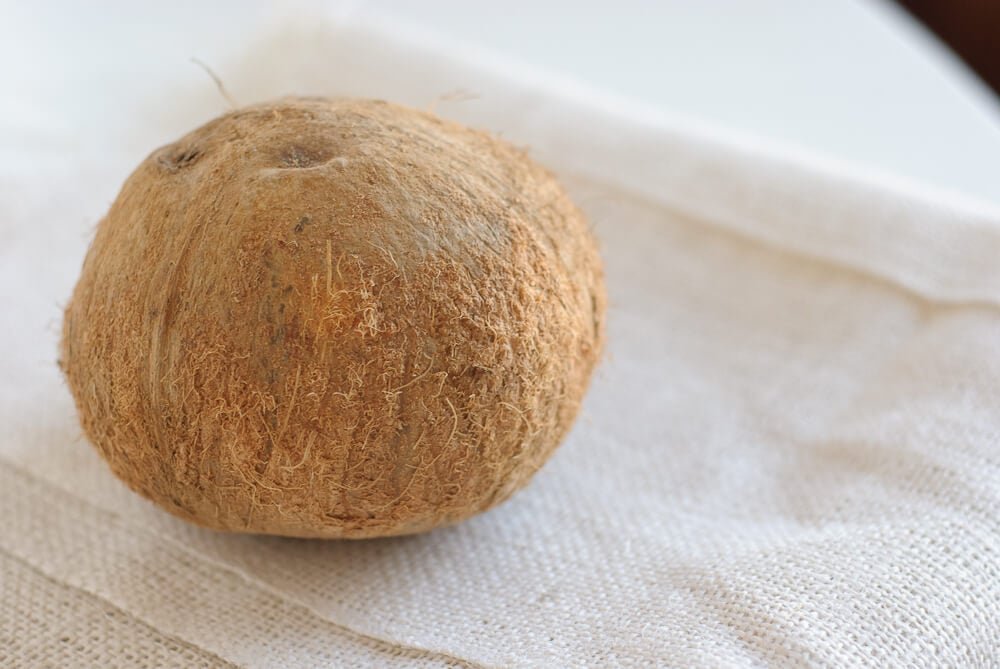
Notes on coconuts
Did you know that coconuts are in season in December and January? Since coconuts are easy to come by this time of year, I used fresh coconut water for this recipe. Keep in mind that you can also use canned coconut milk, which is available year-round!
At the grocery store, I selected a heavy coconut that sloshed around when I shook it. I opened the coconut using rather rudimentary means at home. I cleaned a Phillips screwdriver and hammered (yes, hammered) the screwdriver into the eye of the fruit. I poured the coconut milk into a measuring cup. Conveniently, the coconut milk measured exactly one cup, which is what I needed for the recipe. Success!
Later on, I cracked open the coconut by banging it on concrete. I found other techniques for cracking open a coconut, like this one that requires a butcher knife. I didn’t want to risk losing a hand (how would I eat my pancakes without a hand?) so I took the easier route. Just bang the coconut on the ground, monkey style.
Lastly, Tonya’s recipe called for sweetened coconut flakes, but I genuinely prefer the taste of unsweetened coconut. It’s light and refreshing, without the cloying artificial taste and sticky texture of sweetened coconut. I found unsweetened coconut at a local gourmet food store. Trust me, it’s worth an extra trip!
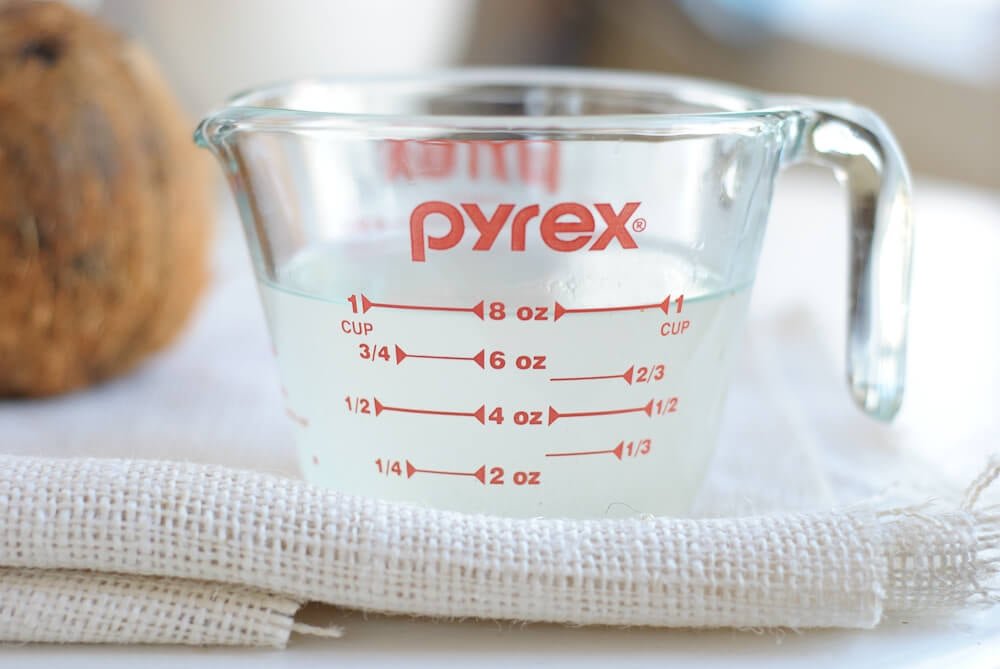
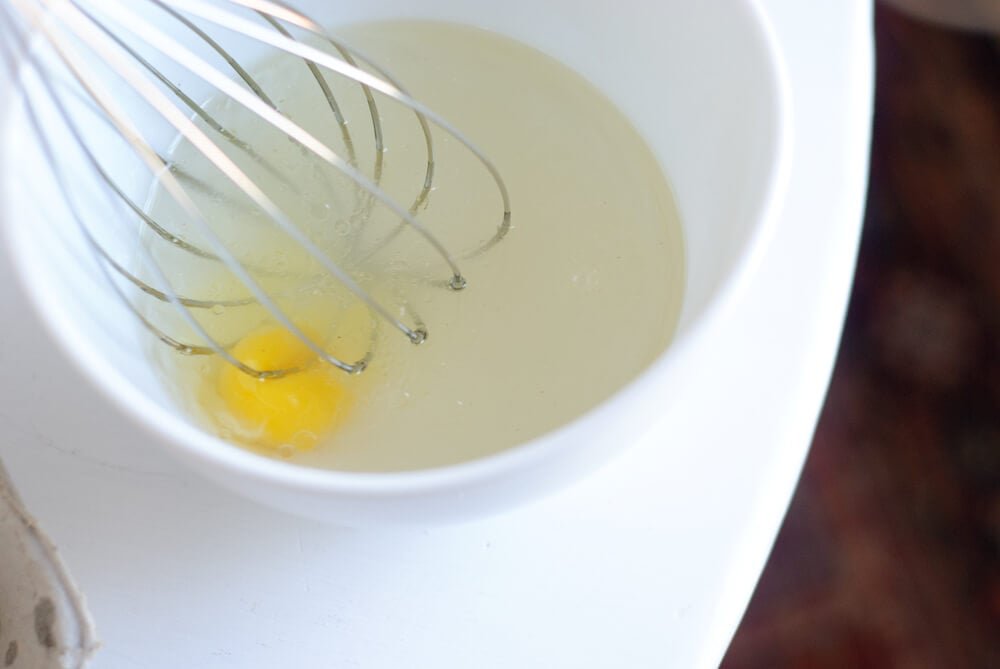
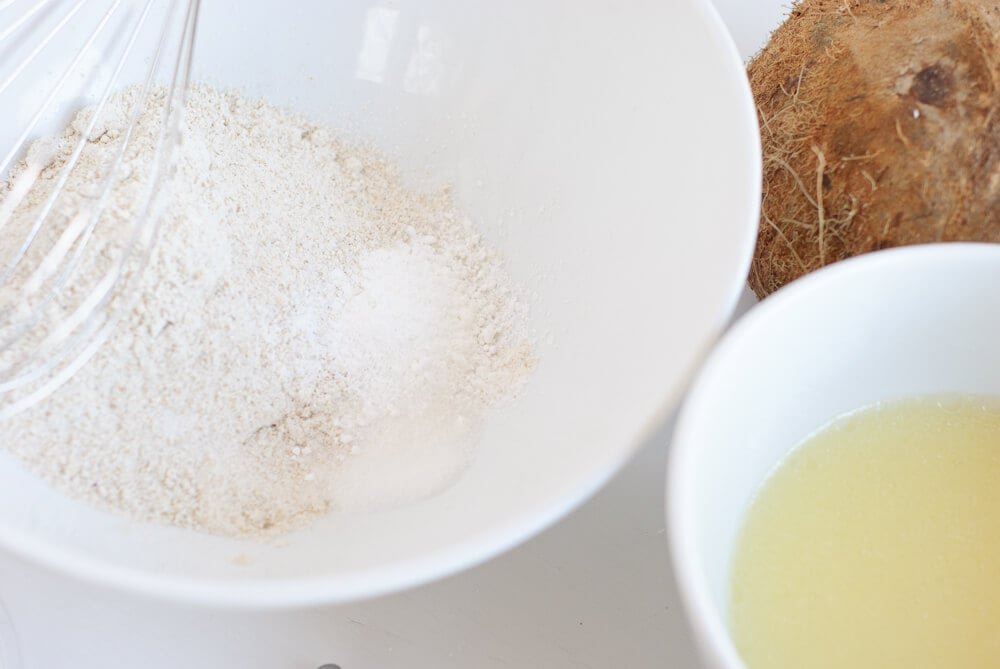
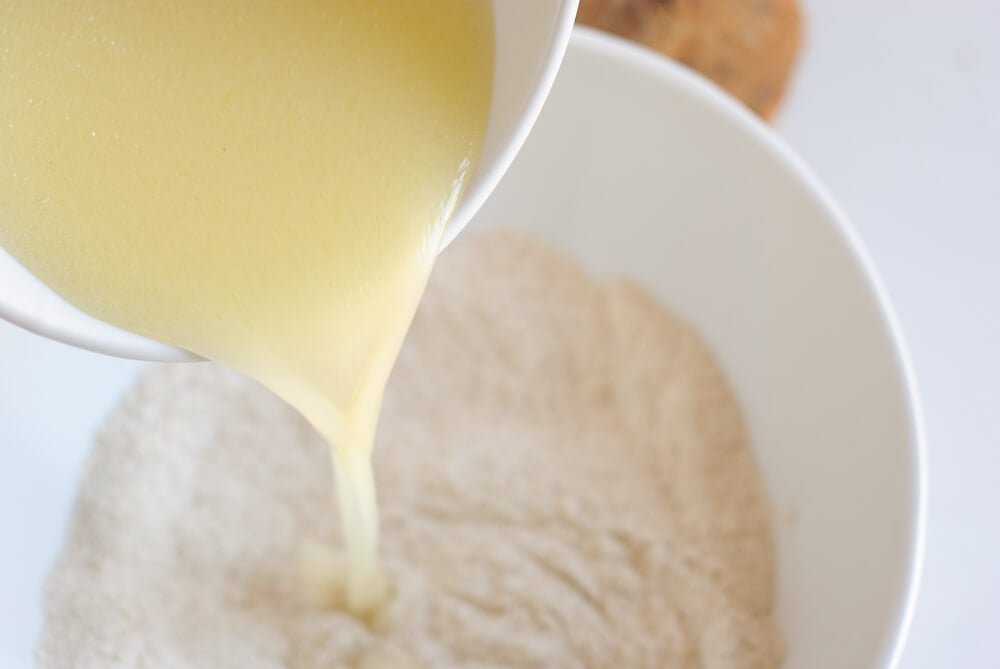
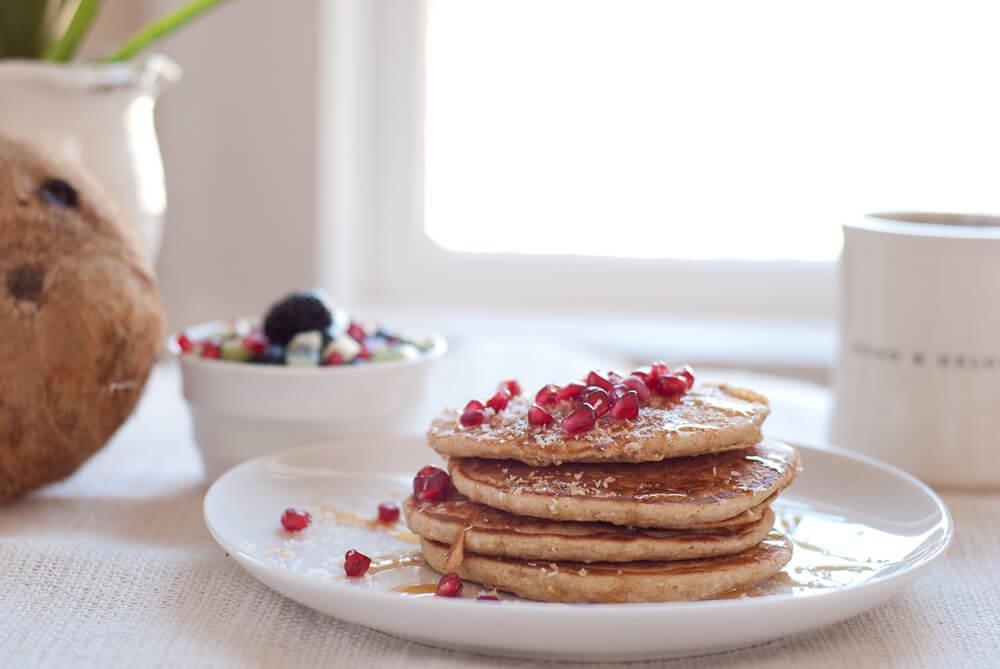
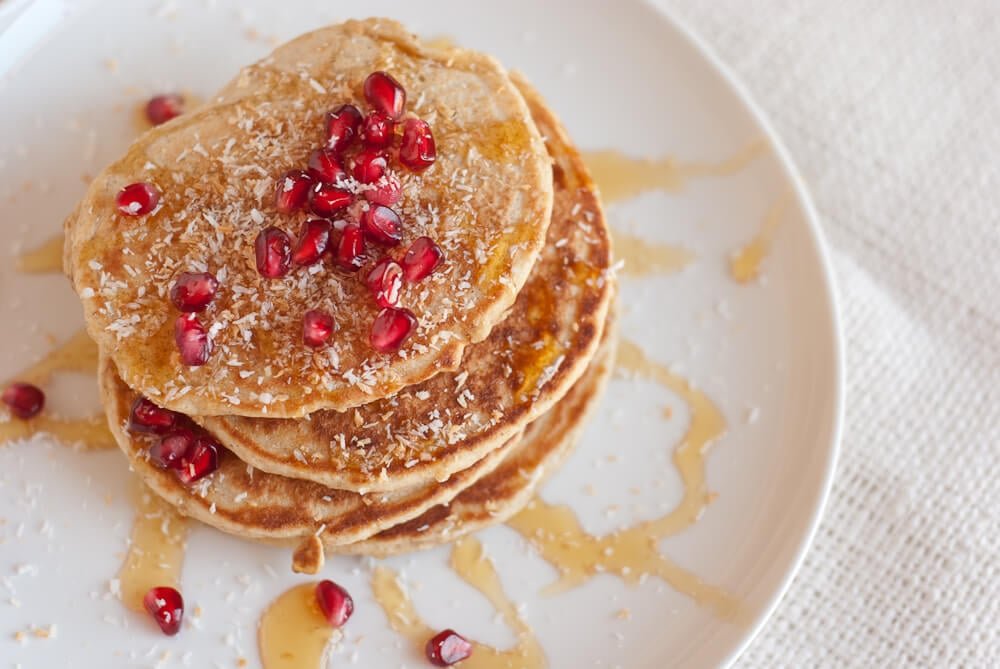

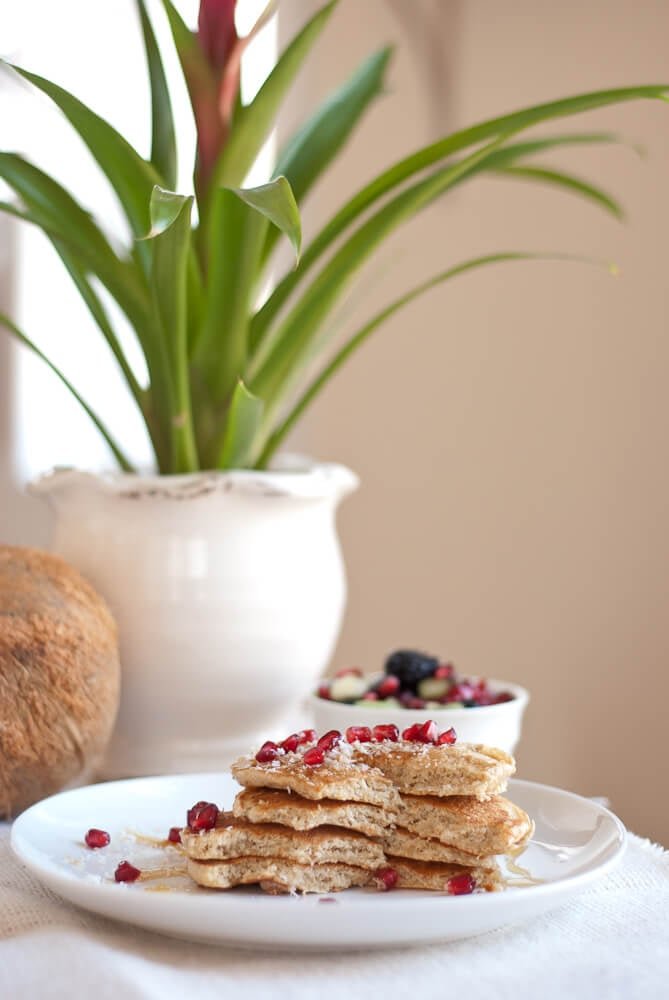
Coconut Pancakes
This wholesome coconut pancakes recipe is made with whole wheat flour, coconut milk or fresh coconut water, and unsweetened coconut flakes. Recipe serves 2 hungry people (makes about eight 4-inch wide pancakes).
- In a medium mixing bowl, mix together the dry ingredients (flour, shredded coconut, sugar, baking powder and salt).
- In a separate bowl, whisk together the liquid ingredients (coconut milk, egg and oil). If the coconut oil solidifies in contact with cold ingredients, let it warm up to room temperature for a few minutes, or microwave briefly in 30-second intervals until it melts and you can whisk it into the rest.
- Pour the wet ingredients into the dry and stir until combined (a few lumps are ok). If you’ll be using an electric skillet, heat it to 350 degrees Fahrenheit. Otherwise, heat a heavy cast iron skillet or nonstick griddle over medium-low heat. You’re ready to start cooking your pancakes once the surface of the pan is hot enough that a drop of water sizzles on contact.
- If necessary, lightly oil the cooking surface with additional oil or cooking spray (I don’t oil the surface of my non-stick griddle and my pancakes turned out great).
- Using a ¼-cup measure, scoop the batter onto the warm skillet. Cook for 2 to 3 minutes until small bubbles form on the surface of the pancakes (you’ll know it’s ready to flip when about ½-inch of the perimeter is matte instead of glossy), and flip. Cook on the opposite sides for 1 to 2 minutes, or until lightly golden brown.
- Repeat the process with the remaining batter, adding more oil as needed. You may need to adjust the heat up or down at this point. Serve the pancakes immediately or keep warm in a 200 degree Fahrenheit oven.
Notes
- Recipe adapted from À La Graham.
- Suggested toppings: Real maple syrup, or a spoonful of fruit compote would be lovely as well. I used regular honey, but it overpowered the coconut flavor. If you have extra coconut milk, try Tonya’s suggestion and mix it with honey in a one-to-one ratio with honey to make coconut honey. Sprinkle extra coconut flakes and top with fresh fruit for a stunning presentation.
Nutrition
The information shown is an estimate provided by an online nutrition calculator. It should not be considered a substitute for a professional nutritionist’s advice. See our full nutrition disclosure here.

